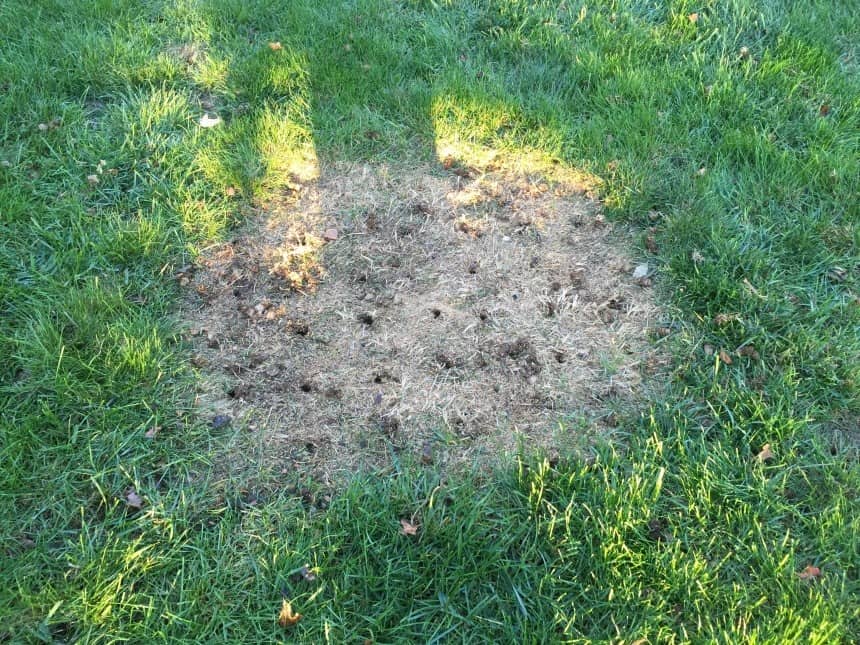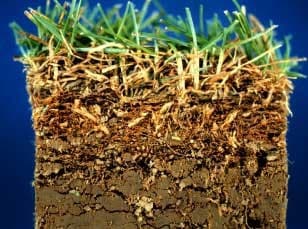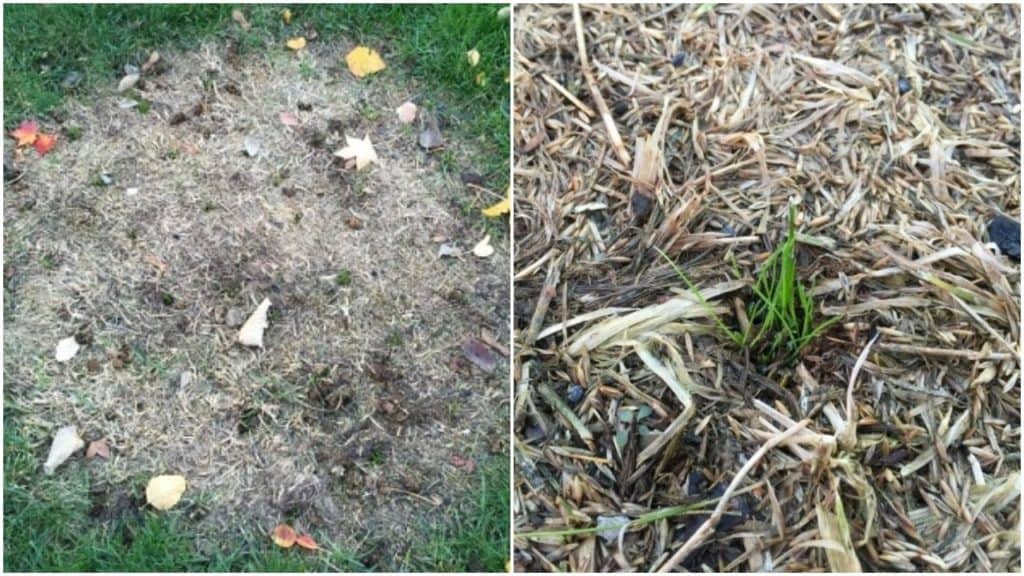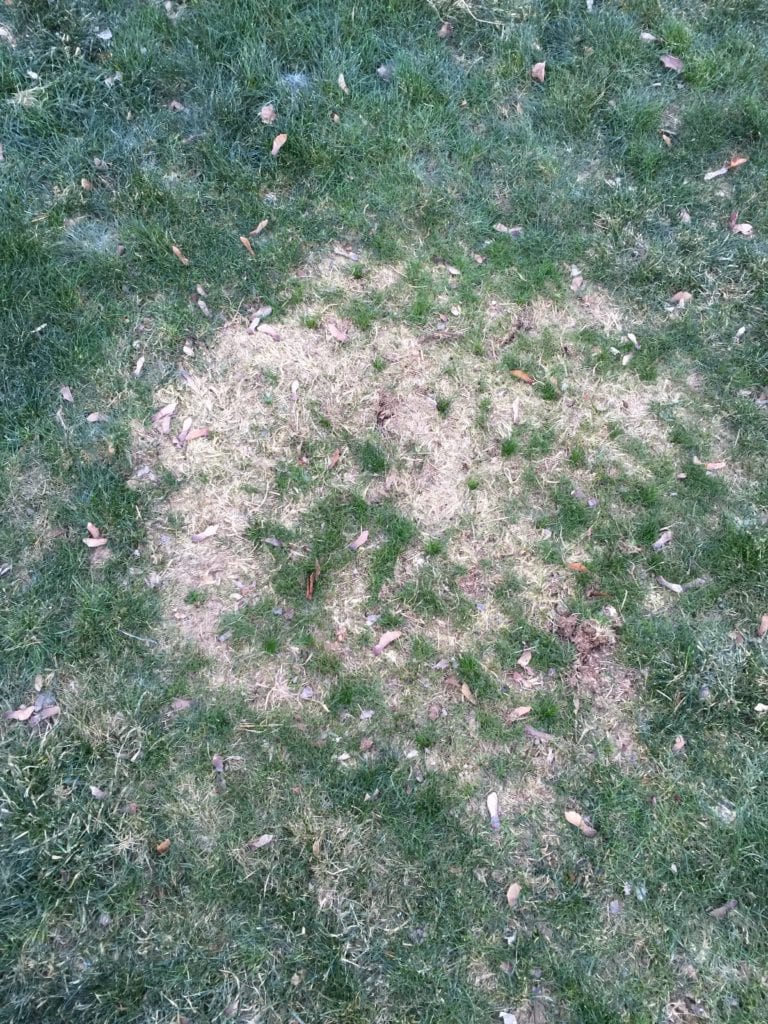Lawn Aeration with Over-Seeding
The Single Most Important Thing You Can Do For Your Lawn
At Green Giant Home & Commercial, the blades of grass are not the first thing we think of when we develop a plan to create a beautiful lawn. Our first thoughts are the soil and the root system, which is the focus of our annual aeration and over-seeding. There is no other process that provides as many benefits to your turf grass.
All yards benefit from annual soil aeration with over-seeding. Lawns that are growing with poor-quality topsoil or that have a lot of activity (foot traffic) especially benefit from aeration each year.
What is Aeration and Over-Seeding?
Lawn aeration is the process of creating small holes in the soil to allow air, water, and nutrients to penetrate deeper into the root zone. Over-seeding is simply spreading high-quality grass seed at the time of aeration.This is a great way to thicken up a thin lawn and fill in dog spots or other dead areas of grass.
Our aeration and over-seeding service will help:
- Reduce soil compaction
- Stimulate root growth
- Decrease water run-off
- Increase air and water penetration
- Improve nutrient uptake via the root system
- Stimulate microbial activity
At Green Giant, we provide core aeration, a process that uses hollow tines to remove thousands of soil “cores” or “plugs” of soil. These plugs are ¾ inches in diameter and can go as deep as 5 inches. Equipment having solid tines or spikes should not be mistaken for core aeration equipment.
Need a hand with grass aeration and over-seeding?
Benefits of Green Giant’s Core Aeration Service
A Thicker, More Lush Lawn
Simply spreading grass seed over a lawn will not provide good results. The grass seed needs a “seed-bed.” Yard aeration provides that seed-bed in the form of the aeration holes.


See the progress pictures below to see what Green Giant can do!
Reduced Compaction of Soil
Core aeration is the only way to alleviate soil compaction in a lawn. Compacted soil can:
- Greatly reduce water and air circulation to the root zone (which healthy grass needs)
- Limit the ability of fertilizer to get down to the root system, where it is most beneficial
- Hinder root growth
Compacted soil is dense with few or no air spaces. It also holds very little water and is much less of a “living environment” than aerated soil. All of these characteristics make it difficult for the plant’s roots to grow through the soil and spread.
The better the plant does below the soil (root system), the better the plant will do above the soil (grass blades).
Management of the Thatch Layer in a Lawn
Thatch is a layer of dead and living, intermingled, grass roots, shoots, and stems that builds up between the soil and the grass blades in a lawn. When the thatch layer gets thicker than ½ inch, a lawn will most likely develop problems.
What Causes a Thatch Layer to Build Up?
The parts of a grass plant that make up the thatch layer do not decay quickly. Therefore, it is common for a lawn to produce roots, stems, and shoots faster than they decompose, resulting in a build-up of the thatch layer. That’s where core aeration comes in.
When the aerator pulls out plugs of soil, it punches through the thatch layer and drops the plugs on the lawn. It’s interesting that thatch in the thatch layer is harmful to the turf. But when the plug of soil and thatch is deposited on the lawn, it provides beneficial organic matter to the soil. Rain and mowing will quickly break down the plugs.
Why is Thatch in a Lawn Bad?
If the thatch layer is not managed, it will create a barrier that will cut off air and water circulation to the roots of the grass plants. It also inhibits the fertilizer from getting down into the root system.
When a thatch layer gets too thick (over ½”), the grass’s roots will begin to grow in the thatch layer instead of the soil. Grass can grow with its roots in the thatch as long as it is wet outside. However, when the weather changes and things dry out, the grass can die.
Any Other Lawn Aeration Benefits?
- The soil is cultivated, greatly improving the results.
- It’s a great way to thicken up a thin lawn or introduce better grass types to a lawn.
- The majority of the new grass will grow in the aeration holes.
- “Tufts” of new grass will grow out of the holes and then “tiller-out” and thicken up the lawn.
- Because the root system of your lawn is improved, the grass will have more tolerance to heat and drought.
- It will help improve resiliency and cushioning for your feet. This is important for sports field managers when players will be running and falling on the turf.
Looking for services in Southeastern Pennsylvania? Green Giant proudly serves the Lehigh Valley as well as Berks and Lancaster counties.
Progress Photos of a Lawn’s Improvement after Aeration and Over-Seeding
While core aeration with over-seeding is primarily used to fill in thin grass areas or small bare patches in a yard, it can also re-establish completely dead sections of grass. The pictures below show how it can fully re-establish the lawn as well as the amount of time the process takes.
The process of building the density of turf takes time with any method. During the aeration, small “plugs” of soil are pulled out of the lawn. Grass seed is then spread over the lawn, and the majority of the seed will germinate in the aeration holes. This process creates minimal disturbance of the soil and is much less messy than rototilling, which leaves completely bare soil that gets muddy and can wash away in the rain.
A four-foot diameter baby pool was in the lawn all summer and caused this dead patch of grass.

October 16
This picture (above) was taken the day our service was done. You can see the ¾” diameter holes and plugs of soil removed by the aerator (especially if you zoom in). The majority of the grass growth will occur in the aeration holes which provide a mini-seedbed. These holes do not dry out as fast as the surface and the seed doesn’t get eaten by birds or washed away in the rain.

After 14 days (October 30)
The pic on the right is a close-up showing seedlings coming out of an aeration hole.
The good news: There is progress! The bad news: It’s really hard to see. Green grass seedlings are beginning to pop up in the aeration holes (picture on the right). You have to get really close to see this. The blades are very thin, somewhere between the thickness of a strand of hair and a thread. Looking closely, seedlings can be seen growing out of every aeration hole. The seeded areas have been watered as described in Green Giant’s over-seeding, watering, and mowing guide.
Given it is October 30th, the new grass may go dormant and additional growth may have to wait until spring. But this is OK. We have established the seedlings and, in the spring, as soon as the soil temperatures are warm enough, the young grass will start growing again.

After 6 weeks (December 2)
Ok, this was a surprise. With more mild temperatures, the grass has continued to fill in. Not that the patch looks great, but when comparing to the earlier pictures, you can really see some progress. This is a huge head start over spring seeding!

April 7
If we had waited until spring to seed, this would still be a bare patch.

April 24
A little more progress…

June 2
Yes, this is the same spot as you saw in the first picture! For the last 4-5 weeks, we have had good, spring growing conditions. It does take some time, but, with some care, aeration with over-seeding works. At this point, the grass has completely filled in, and you cannot see a difference from the rest of the lawn.
Our lawn aeration service saves your lawn and your time. We service local communities from Reading and Allentown to Bethlehem, Lancaster, and everywhere in between!
Read more about aeration and over-seeding by clicking on the links below:
Can I Seed My Lawn and Use Crabgrass Preventer this Spring?
What Kind of Grass Seed should I use for my Lawn?